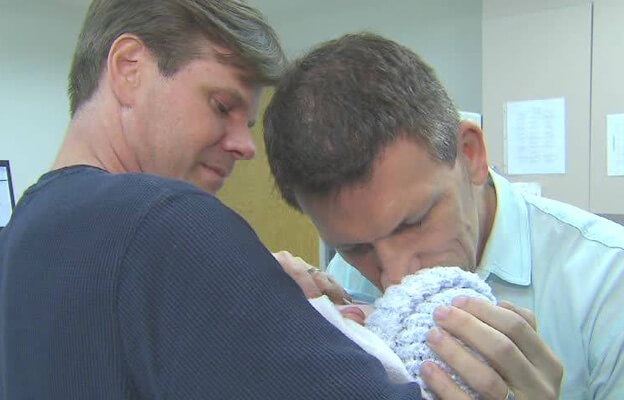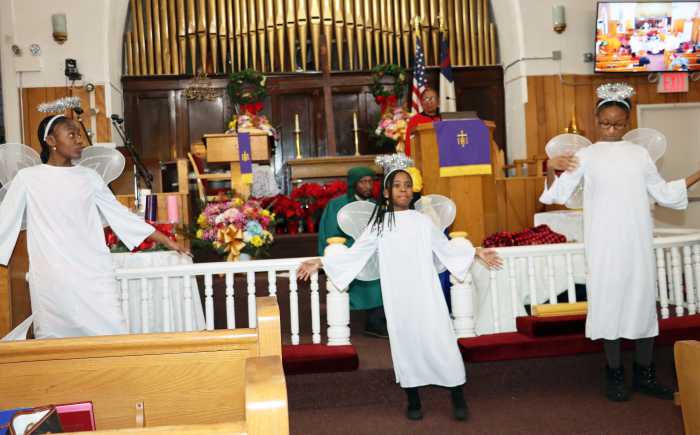In a unanimous October 3 decision, the Nevada Supreme Court settled several questions previously unaddressed in state law — finding, first, that a child can have two mothers and, second, that a co-parenting agreement made by two women before the birth of their child conceived through anonymous donor insemination, with one woman providing the egg and the other being the gestational mother, can be enforceable.
The decision reversed a trial court decision that treated one of the women as a mere surrogate mother with no legal rights, and the case was returned to the trial court for a new determination of parental rights.
Justice Nancy M. Saitta’s decision for the court gave great weight to California decisions that interpret similarly-worded statutes.
High court finds both mothers can be legal parents in complex surrogacy case
Sha’Kayla St. Mary and Veronica Lynn Damon moved in together about a year after their relationship began, and decided to have a child together. According to St. Mary, they decided that Damon would contribute the egg for in vitro fertilization with the resulting ovum implanted in St. Mary so that both women would have parental status — St. Mary as the birth mother and Damon as the genetic mother.
After the fertilization was performed but before the child’s birth, the women signed a co-parenting agreement, under which they agreed that if their relationship ended, they would “each work to ensure that the other maintained a close relationship with the child, sharing the duties of raising the child, and make a ‘good faith effort to jointly make all major decisions’” affecting the child.
St. Mary gave birth to the child in June 2008 and was listed on the birth certificate as the child’s only parent, but the child was given a hyphenated last name to reflect both mothers. About a year later, the women ended their relationship, St. Mary moved out, and they disagreed about how to share their time with the child. St. Mary, however, cooperated with Damon by signing an affidavit declaring that Damon was the biological mother of the child, which Damon used to get a court order to have the child’s birth certificate amended to list her as well. That court, in 2009, declared Damon the child’s “biological and legal mother.”
When St. Mary next filed a lawsuit seeking to establish custody, visitation, and child support, Damon responded that as the biological mother she was entitled to sole custody, attaching the 2009 court order.
The trial judge treated St. Mary as a mere surrogate. Damon succeeded in having St. Mary’s custody claim excluded from consideration and the case narrowed to only the question of visitation. The court found that St. Mary should have “third party visitation,” finding she “has no biological or legal rights whatsoever under Nevada law.” Further, the judge found the co-parenting agreement unenforceable, concluding that it fell outside the scope of valid surrogacy agreements, which under Nevada law could be made only by a married couple with a surrogate.
St. Mary appealed the denial of her parental rights, and the Nevada Supreme Court unanimously agreed, finding that the trial judge was mistaken about state law.
Following the lead of the California courts, the Supreme Court held that a child can have two legal mothers, and that a co-parenting agreement such as the one made in this case could be enforceable. Most significantly, the court found that St. Mary could be deemed a parent to the child because she was its birth mother under circumstances where the women agreed both were intended to be parents. The trial judge misconstrued the effect of Damon’s 2009 legal action establishing her parental rights, the high court said. The 2009 court order established Damon’s status as a legal mother of the child, but it did not order that St. Mary’s name be removed from the amended birth certificate.
The case has contested facts, however. Damon claims St. Mary was intended only to be a surrogate and not an intended parent, and that the “co-parenting agreement” was actually an invalid surrogacy contract the women signed because the clinic that performed the fertilization required a written agreement. When the case goes back to the trial court, it will have to determine whether St. Mary or Damon is more credible, but Justice Saitta’s narration of the facts implicitly suggests that St. Mary’s account makes more sense.
Nevada is now a domestic partnership state, but that development post-dates the events at issue in this case. Had the women been registered Nevada domestic partners then, the law would have recognized both as parents of the child. But many lesbian couples have children without undertaking to register as partners or to marry — and, of course, in most states such options don’t exist at all — so the Nevada high court’s ruling remains important in continuing a trend from California and followed in New Mexico, as well, to encompass the legal situation faced by non-traditional families.


































